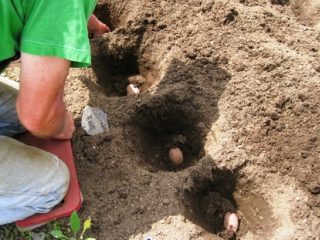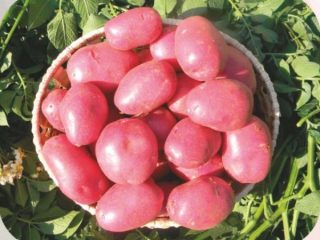Content
It is believed that Holland is an exemplary country in agriculture. It is not for nothing that Dutch tulips and other flowers are considered to be the best; Dutch varieties of vegetables are very popular all over the world. Yes and Dutch potato varieties have always been famous for their productivity and resistance to infections. But not only Holland can boast of its potatoes. For Belarus, potatoes are almost a national symbol. And, of course, potato varieties bred in Belarus are not much inferior to their Dutch counterparts.
The Zhuravinka potato is a clear example of what Belarusian selection can achieve in potato growing. Many indicators of this variety, such as yield, disease resistance, keeping quality, are quite at the level of world standards.
Description of the variety
It is logical to begin the description of the Zhuravinka potato variety with the history of its creation. The variety was bred by Belarusian breeders in collaboration with Russian farmers from the Niva farm more than 10 years ago. In 2005, it was registered in the Russian State Register of Breeding Achievements. The patent was issued at the Republican Unitary Enterprise Scientific and Practical Center of the National Academy of Sciences of Belarus for potato and fruit and vegetable growing. The Zhuravinka variety was recommended for use in the North-Western, Central and Volga-Vyatka regions.Thus, this potato is zoned everywhere from the Vologda region to the Perm region. However, thanks to the versatility and many valuable qualities of this variety, it is successfully grown in other regions of our country.
The Zhuravinka potato bushes themselves are low, the shoots are strong and erect. The leaves are small in size with fairly well-defined veins, with the anthocyanin color predominating in the central vein. There is a slight waviness along the edge of the leaves. Each bush produces up to six stems.
The inflorescences are large and beautiful, the corollas are purple-red. Berries with seeds are formed quite rarely. When planting, the shoots appear very quickly, and the above-ground part grows very intensively in the first period of development. The root system also develops rapidly in the first month after planting.
Characteristics of the variety
The Zhuravinka potato variety is a medium-late variety, which means that from planting to harvest it usually takes from 90 to 110 days.
Productivity is one of the biggest advantages of the Zhuravinka variety. On average, it is about 400-600 centners per hectare. But it is known that it was quite possible to receive up to 700 centners. This figure is quite comparable to the yields of the best potato varieties from Holland.
It is important that, other things being equal, we can talk about the stability of such yield indicators. That is, it does not depend as much on environmental conditions as other potato varieties.
If we talk about such characteristics of potatoes as their preservation, then here too the indicators are at a high level.The keeping quality of tubers is estimated at 96%, which means that by spring only about 4% of potato tubers are in poor condition. The rest do not lose their commercial characteristics and, when used for food, are practically no different from tubers freshly picked in the fall.
An important positive feature of the Zhuravinka variety is that the tubers tolerate mechanical damage well.
Separately, it is worth emphasizing the fairly high resistance of this potato variety to various diseases. It completely resists potato cancer and golden nematode, shows sufficient resistance to scab, blackleg and some viruses, as well as late blight of tubers. Resistance to rhizoctonia and late blight of the aerial parts is low.
Characteristics of tubers
The tubers of this variety are quite varied in appearance.
- The shape can be either oval-round or simply round. The surface of the tubers can be smooth, or it can be textured, covered with a kind of mesh.
- The peel is distinctly red, while the flesh is light yellow.
- The eyes are small, evenly distributed over the surface of the tuber.
- Tubers of this variety, photos of which are presented below, are quite large, up to 300 grams.
Although the average size varies from 92 to 145 grams. - The Zhuravinka variety is also a leader in terms of the amount of starch in tubers. Its content can vary from 14.8 to 20%. With such a high starch content, the tubers of this variety can well be used for industrial processing and the production of potato starch. The pulp of Zhuravinka potatoes does not darken after heat treatment and boils well.
- The taste of potatoes is excellent.A wide variety of dishes can be prepared from Zhuravinka. This variety is used in the industrial production of potato chips.
- The marketability of the variety is also quite good, from 83 to 97%. This indicator determines the number of tubers suitable for consumption when digging potatoes.
Features of cultivation
Preparing Zhuravinka potato tubers for planting is no fundamentally different from other varieties. As a rule, a few weeks before planting, tubers are removed from storage, sorted and placed in boxes for vernalization. Since potato varieties resistant to the Colorado potato beetle have not yet been invented, it is possible to treat the tubers with Prestige or Komandor before planting. This will increase the degree of protection of potato plants from Colorado potato and other pests several times. True, protection is usually effective only before flowering; subsequently it will be necessary to treat with any suitable insecticide at least once again.
Any soil is suitable for growing Zhuravinka potatoes, but this variety has a negative attitude towards excess nitrogen fertilizers in the soil, so it is better to underfeed it than to overfeed it.
The Zhuravinka potato grows well only in fully sunny areas. This factor must also be taken into account when choosing a place to plant potatoes.
Due to the large number of tubers in the bush, it is necessary to plant potatoes more sparsely than for other varieties. The row spacing should be at least 60 cm, and it is better to leave 70 cm. In this case, it will be possible to carry out full hilling of the bushes. Their ventilation will increase and each bush will eventually receive more sunlight, which will certainly have a positive effect on the yield.In the case of ordinary thickened planting, Zhuravinka potato bushes will in any case delight you with a large number of tubers. But the size of these tubers will be so small that it would be more rational to use it as animal feed.
The Zhuravinka potato germinates very quickly and is distinguished by powerful and rapid growth of both above-ground and underground parts in the first month of its development. It is during this period, before flowering, that additional moisture is very desirable. And although it tolerates short periods of drought, this cannot but affect the yield.
Interestingly, Zhuravinka potatoes also do not really like high moisture content in the soil. In such conditions, outbreaks of diseases are possible, therefore, if the summer is too rainy, then preventive treatments with fungicides, for example, Fundazol, are necessary.
Reviews from gardeners
Gardeners all over Russia love to plant Zhuravinka potatoes, so there are many reviews, and they are different, but generally positive.
Conclusion
Although Zhuravinka potatoes came to Russia from Belarus, they are quite popular throughout the country due to their yield and excellent taste.

















